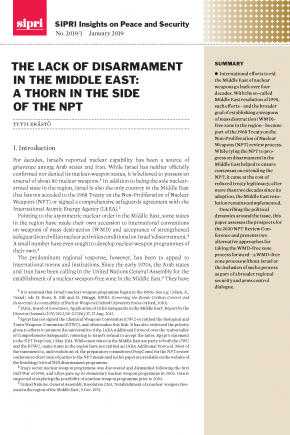The Lack of Disarmament in the Middle East: A Thorn in the Side of the NPT
International efforts to rid the Middle East of nuclear weapons go back over four decades. With the so-called Middle East resolution of 1995, such efforts—and the broader goal of establishing a weapons of mass destruction (WMD)-free zone in the region—became part of the 1968 Treaty on the Non-Proliferation of Nuclear Weapons (NPT) review process. While tying the NPT to progress on disarmament in the Middle East helped to ensure consensus on extending the NPT, it came at the cost of reduced treaty legitimacy; after more than two decades since its adoption, the Middle East resolution remains unimplemented.
Describing the political dynamics around the issue, this paper assesses the prospects for the 2020 NPT Review Conference and presents two alternative approaches for taking the WMD-free zone process forward—a WMD-free zone process without Israel or the inclusion of such a process as part of a broader regional security and arms control dialogue.
I. Introduction
II. The 1995 Middle East resolution
III. Divergent views on the regional nuclear order
IV. Cancellation of the Helsinki conference
V. Controversy at the 2015 NPT RevCon
VI. The Middle East resolution at the 2017–18 PrepComs
VII. Developments in the 2018 First Committee
VIII. Prospects for the 2020 RevCon
IX. Two approaches to moving forward
X. The JCPOA: An underappreciated factor in WMD-free zone efforts
XI. Conclusions

